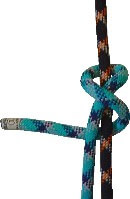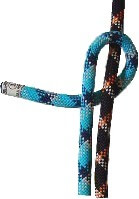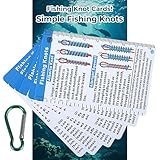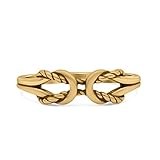Fisherman's Knot and Double Fisherman's Knot
This knot is used to connect two ropes together. It is commonly used in climbing and other sports. The ease of tying makes the fisherman's knot a good knot to use with small line such as fishing line, thus the name. The only knot you need to know how to tie is the overhand to complete this knot. When the first knot is completed it can be tightened and dressed.
This helps keep the "tie up loose ends" to make it easier to manage. The double fisherman's knot adds additional security. The overhand can be tied multiple times, therefore the fisherman's knot can have as large a stopper knot as desired.
The fisherman's knot is used to tie the smaller cord that is required in the Prusik Knot, used for ascending another rope.
Sequence to Tie the Fisherman's Knot

Step 2.
With the end of the first rope, tie an overhand around the second rope.
Step 3.
Work the knots tight so they have a good uniform shape.
Step 4.
Pull the two ropes together and tighten to complete the Fisherman's Knot.Tie the Double Fisherman's Knot:

Step 1.
Start the Double Fisherman's Knot by tying a double overhand around the first rope.
Step 2.
With the end of the first rope, tie a double overhand around the second rope. Tighten the knots evenly.
Step 3.
Pull the two ropes so the knots come together. This is the Double Fisherman's Knot.
53%
$22.93












